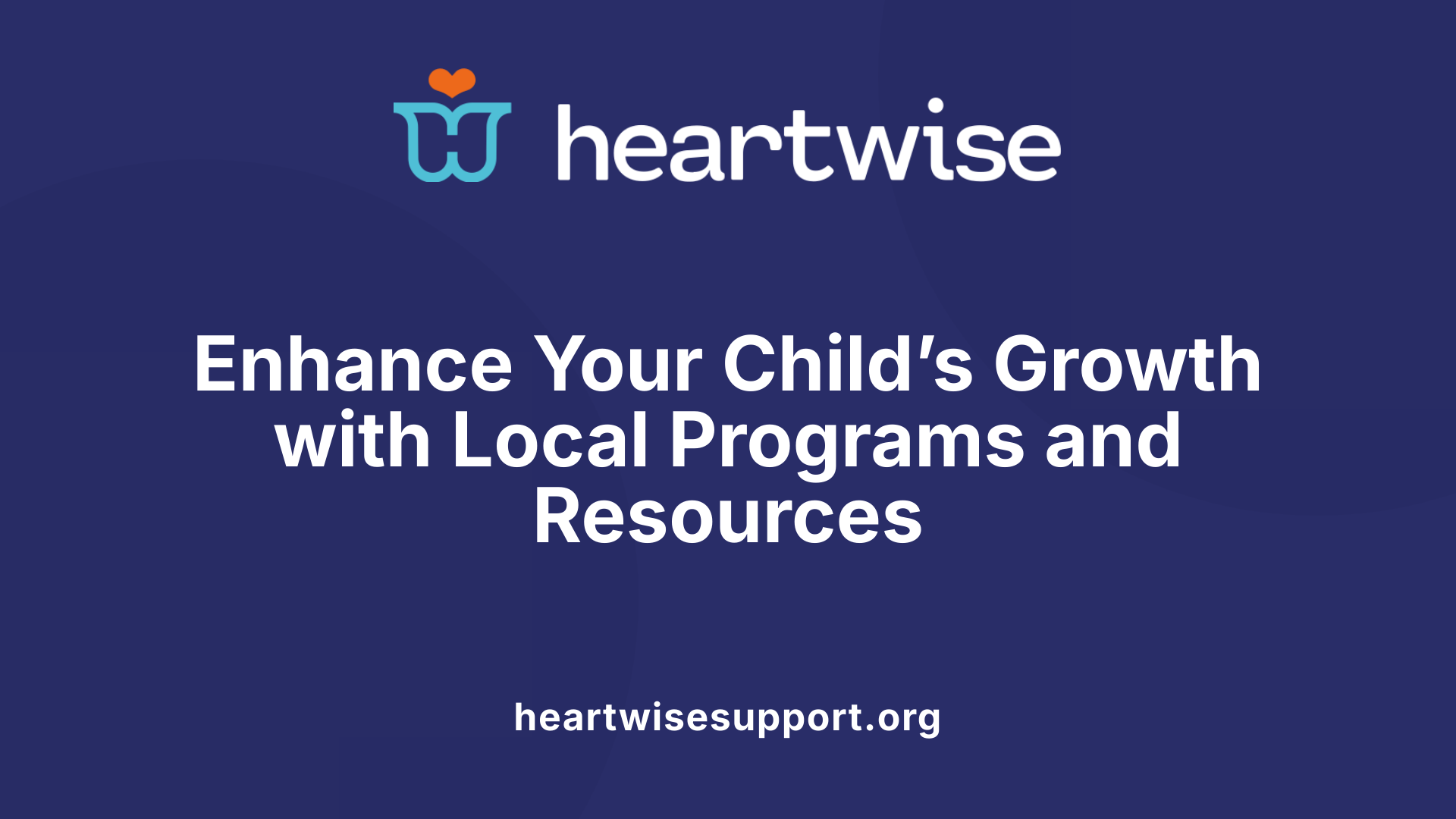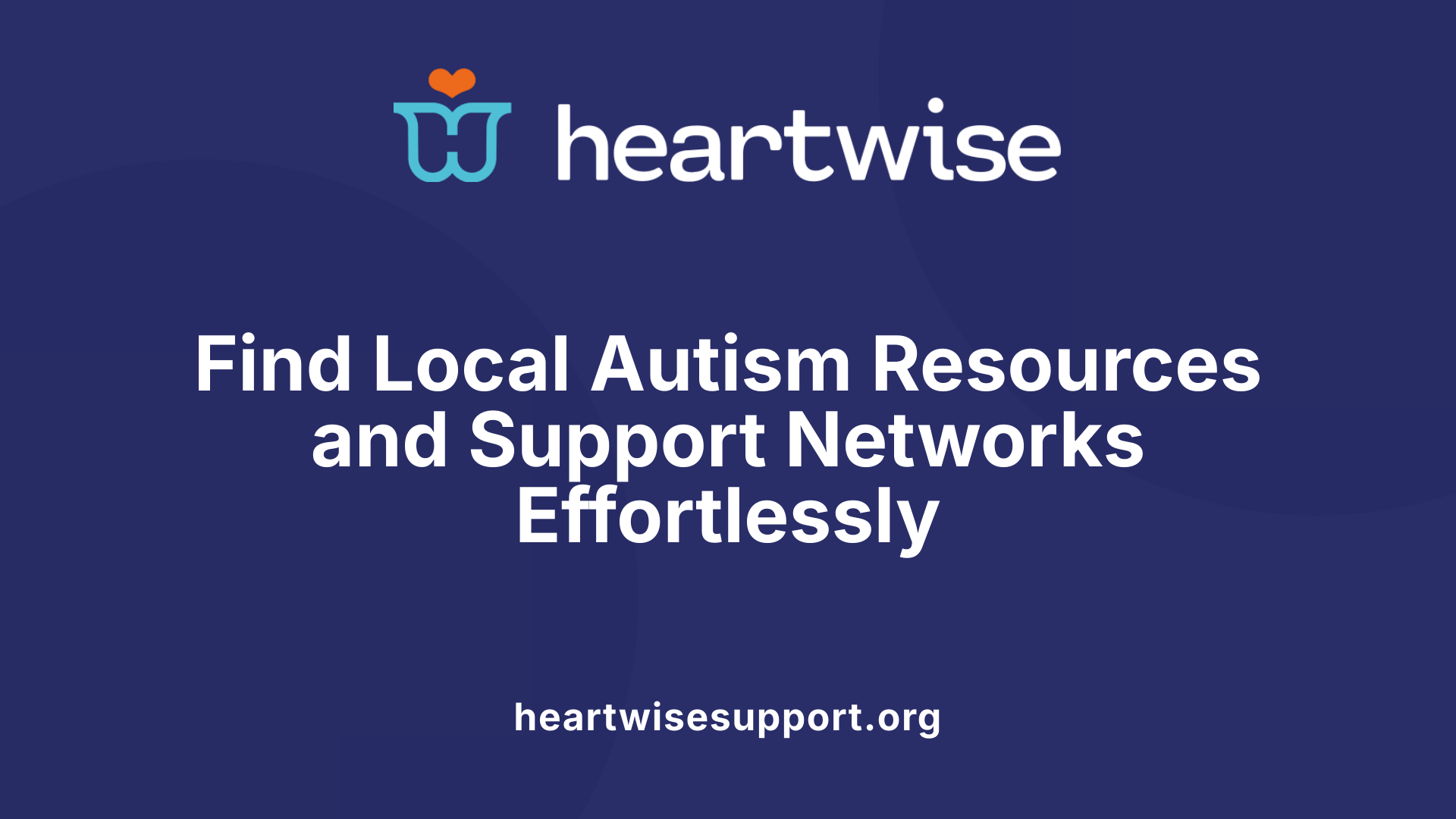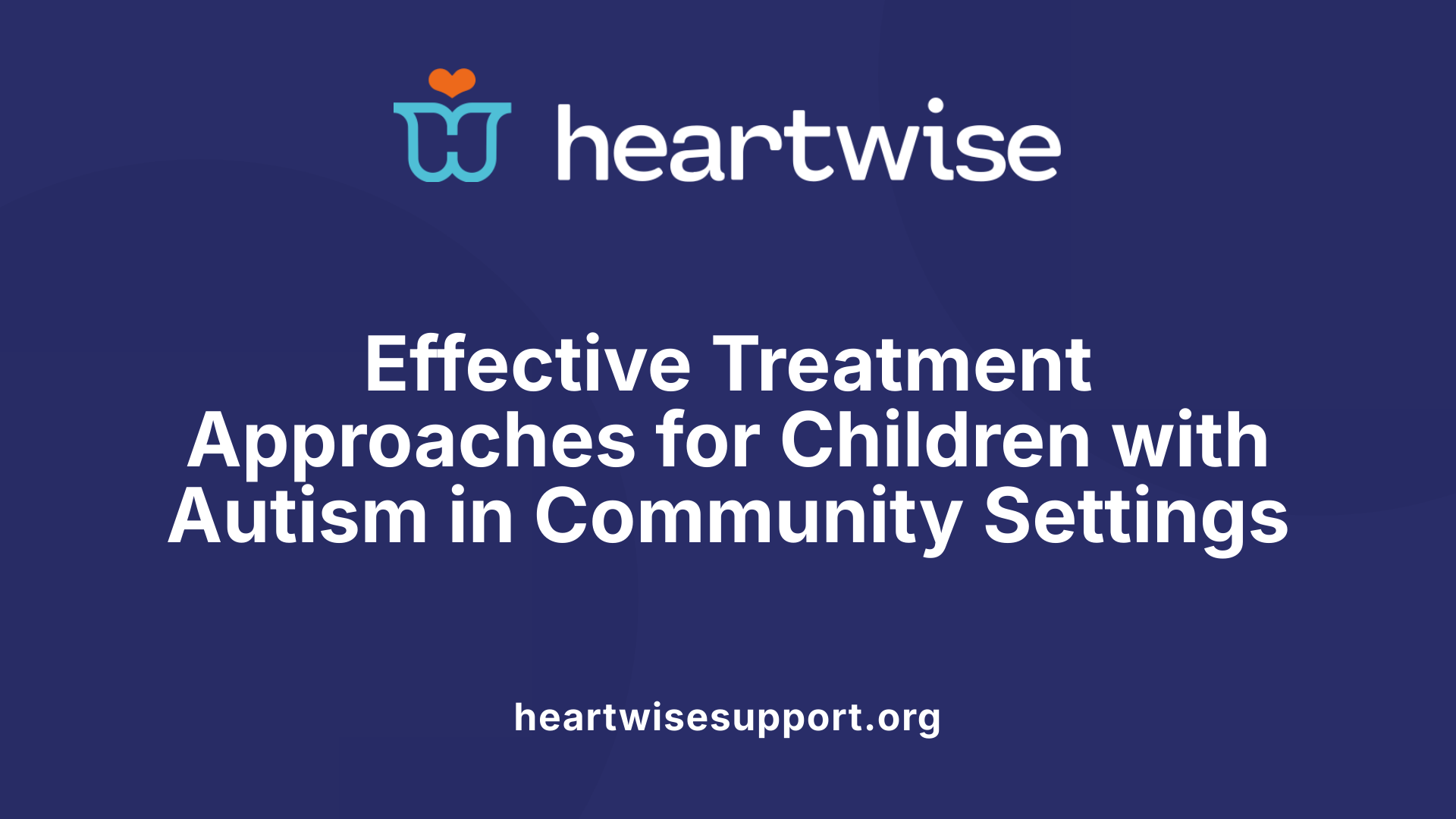Understanding the Importance of Community Support for Autism
Community-based support systems play a vital role in enhancing the quality of life and promoting acceptance for children with autism. These support options, involving programs, services, and advocacy efforts, are designed to foster social inclusion, skill development, and family empowerment. This article explores the diverse landscape of community resources, treatment approaches, and organizational support that create a more inclusive environment for children on the autism spectrum.
Overview of Community Support Options for Children with Autism

What support options are available within communities for children with autism?
Communities offer a broad array of support options designed to improve the quality of life for children with autism and their families. These resources aim to promote development, foster social inclusion, and provide necessary services across different settings.
One important aspect of community support includes various after-school programs tailored to children with autism. These programs often focus on social skills, communication, and adaptive behaviors, helping children build relationships and gain independence. Some programs incorporate art and music activities, providing therapeutic benefits through creative expression and sensory stimulation. Such activities are frequently organized by local community centers, schools, and nonprofits dedicated to supporting developmental differences.
Community engagement opportunities are plentiful, encouraging participation in local events, sports, and social clubs. These activities serve to normalize experiences for children and help foster inclusion within neighborhood settings. Many community organizations host social skills groups and camps specifically designed for children with autism, creating safe spaces where they can practice interacting with peers.
Support groups play a vital role in offering emotional and practical assistance to families and individuals. For parents, siblings, and even adults with autism, these groups—often facilitated by nonprofits like Autism Speaks or local autism societies—provide peer support, resources, and advocacy training. Many of these groups operate locally or online, enabling families to connect regardless of geographical barriers.
For clinical and diagnostic needs, community clinics and developmental centers provide evaluation and diagnosis services to determine the specific needs of each child. Early identification through these services assists in accessing targeted interventions such as occupational therapy and speech-language therapy, essential for developing communication, motor skills, and daily living abilities.
In addition, many communities offer respite care and adult day programs to support families by providing temporary relief and enabling caregivers to attend to other responsibilities. Respite services include in-home support and community-based programs where children and adults with autism can participate in structured activities under professional supervision.
Occupational and speech therapies are core services accessible through healthcare providers and local clinics. These therapies are designed to improve essential skills, including language development, sensory processing, and fine motor skills. Community-based therapies often involve visits to local centers or in-home sessions, making support more accessible and tailored to each child's environment.
Support for transitioning to adulthood is increasingly available through adult day programs, supported employment initiatives, and life skills training. These programs prepare individuals with autism for independent living, work, and community participation.
In summary, community-based support for children with autism is diverse and includes educational, therapeutic, social, and family-centered services. Local organizations, healthcare providers, and government programs collaborate to create inclusive environments that foster growth, acceptance, and well-being for children and their families.
| Support Type | Examples and Description | Responsible Entities | Accessibility Notes |
|---|---|---|---|
| After-school programs | Social skills groups, recreational activities, skill-building camps | Schools, community centers, nonprofits | Often need registration, some funding available |
| Art and music activities | Creative expression, sensory integration, therapeutic engagement | Local arts organizations, therapy centers | Usually inclusive, with adaptations available |
| Community engagement opportunities | Local events, sports leagues, festivals, inclusive activities | Community groups, faith organizations, sports clubs | Focus on inclusivity, often free or subsidized |
| Support groups for families | Peer support, resource sharing, emotional support | Autism Speaks, local autism societies | Available online and locally, multiple languages |
| Professional evaluation services | Diagnoses, functional assessments | Local clinics, developmental centers | Often covered by insurance, Medicaid, or assistance programs |
| Occupational and speech therapies | Motor skills, language development, sensory integration | Healthcare providers, specialized clinics | May be covered by insurance, available in community clinics |
| Respite care and adult programs | Temporary relief services, adult day programs | Local agencies, nonprofits | Vary by location, some supports are in-home or center-based |
Understanding and utilizing these community options can significantly enhance the everyday lives of children with autism and their families. With ongoing efforts to expand and improve community-based resources, families can access supportive, inclusive environments that nurture growth, social participation, and family well-being.
Resources and Organizations Offering Support and Advocacy
What resources and organizations offer support and advocacy for children with autism?
A variety of organizations are dedicated to supporting children with autism and their families. Autism Speaks, for instance, has a longstanding reputation for providing comprehensive resources post-diagnosis. Their Autism Response Team (ART) offers personalized support, connecting families to community resources and advocacy efforts that influence policy at both state and federal levels.
The Autism Society of America (ASA) is another prominent organization. It operates through a network of local affiliates across the country, offering support groups, educational programs, and advocacy activities focused on improving services and societal acceptance for autistic individuals.
The Autistic Self Advocacy Network (ASAN) takes a slightly different approach by emphasizing the rights and self-determination of autistic individuals. Led by autistic adults, ASAN works on policy advocacy, community support, and raising awareness about autism rights.
In addition, the Center for Autism and Related Disorders (CARD) specializes in delivering evidence-based treatment and providing valuable information about interventions like Applied Behavior Analysis (ABA). They also organize community training, helping families and professionals better serve children with autism.
Support for research and public awareness is also driven by organizations like the Autism Science Foundation, which funds scientific studies, promotes public understanding, and advocates for policy change.
Government agencies play a pivotal role as well. The Centers for Disease Control and Prevention (CDC), National Institutes of Health’s NICHD, and state agencies implement programs that improve access to screening, diagnosis, intervention, and community support services.
State initiatives and local organizations further expand these efforts by offering community-based programs, local support groups, and specialized resources tailored to regional needs. Examples include local chapters of the Autism Society, community autism resource centers, and state development offices.
The integration of these resources creates a network of support that spans from early intervention through adulthood, fostering inclusion, independence, and improved quality of life for individuals with autism.
| Organization/Agency | Primary Focus | Notable Programs & Initiatives | How They Support Children with Autism |
|---|---|---|---|
| Autism Speaks | Resources, advocacy, research | Autism Response Team, community events | Connects families to resources, advocates for policy changes |
| Autism Society of America | Local support, education | Support groups, community outreach | Provides local networks and educational support |
| ASAN | Rights, self-advocacy | Policy advocacy, community programs | Empowers autistic individuals to advocate for themselves |
| Center for Autism and Related Disorders | Treatment, information | ABA therapies, training | Delivers evidence-based therapies, trains families and professionals |
| Autism Science Foundation | Research funding, awareness | Grants, public campaigns | Promotes scientific research to improve treatments |
| CDC/NICHD | Screening, policy, data collection | Autism and Developmental Disabilities Monitoring (ADDM) network | Enhances early diagnosis and supports public health initiatives |
| State & Local Agencies | Regional programs, support | Community resource centers, local support groups | Provides region-specific support, interventions, and resources |
This broad spectrum of organizations and agencies ensures comprehensive support for children with autism, from early diagnosis to adulthood, fostering a society that embraces inclusion and provides opportunities for all.
Navigation of Community-Based Support Programs and Services

How can families navigate and access community-based autism support programs and services?
Families seeking autism support services can start by exploring reputable online directories and resource guides. One valuable resource is the Interagency Autism Coordinating Committee (IACC) website, which offers a comprehensive list of state and national agencies, organizations, and programs dedicated to autism support across the United States. These links include Autism Society affiliates, state-specific autism profiles, and other community resources.
The Autism Society plays a significant role in guiding families through advocacy, understanding their rights, and navigating complex systems. They provide training on how to advocate for children effectively, prepare for Individualized Education Program (IEP) meetings, and access educational and health services.
Local organizations such as Community Autism Resources (CAR) serve as vital hubs for community engagement. CAR and similar groups organize events like resource fairs, workshops, and fundraisers that connect families with local support systems. They also offer personalized assistance in connecting families with educational, healthcare, and transition services.
Attending community events and participating in local groups also helps families build networks with other families and professionals. These connections can provide emotional support, practical advice, and direct guidance about available services.
For educational services, families can coordinate with local schools, which often work with community agencies to implement IEPs and provide related services like speech, occupational, or behavioral therapies. Healthcare providers, including developmental pediatricians and specialists, can collaborate with community-based programs to ensure comprehensive care.
Researching and engaging with advocacy efforts allows families to better understand how to access and utilize services. State and community programs frequently update their offerings and eligibility requirements, so staying informed through newsletters, websites, and direct contact is essential.
In summary, navigating community-based autism programs involves leveraging online directories, engaging local organizations, attending community activities, and collaborating with schools and healthcare providers. Advocacy and active participation are crucial components to ensuring children and families receive the support they need for healthy development and community inclusion.
| Resource Type | Key Focus | Additional Details |
|---|---|---|
| Online directories | Comprehensive listings of programs and agencies | IACC website, state profiles, Autism Society affiliates |
| Community organizations | Local events, support services, advocacy | Community Autism Resources, Autism Walks, local support groups |
| Parent training and support | Advocacy skills, IEP prep, education access | Workshops, online courses, and family resource centers |
| School and healthcare collaboration | Integrated services, transitional support | IEP meetings, health providers, community therapists |
| Advocacy resources | Access to services, policy engagement | State programs like the Texas Autism Program, Florida Autism initiatives |
Attending community events, utilizing online tools, and building relationships with local support organizations are effective ways for families to find suitable services and actively participate in the autism community.
Treatment Approaches in Community Settings

What are some of the treatment approaches used in community settings for children with autism?
In community environments, numerous evidence-based approaches are employed to support children with autism. These methods are tailored to meet individual developmental and behavioral needs and focus on promoting skills, reducing challenges, and fostering independence.
Applied Behavior Analysis (ABA) is one of the most widely used therapies. It involves systematic techniques like discrete trial training (DTT), natural environment teaching, and pivotal response training (PRT). These strategies focus on teaching new skills, increasing positive behaviors, and decreasing maladaptive ones. ABA can be delivered in various community settings, such as homes, clinics, and public places.
Developmental approaches like the Early Start Denver Model (ESDM) and the Developmental, Individual Differences, Relationship-Based model (DIR/Floortime) prioritize creating engaging, child-led interactions. These methods aim to improve social, emotional, and communication skills by focusing on developmental milestones within naturalistic interactions.
Structured educational strategies, such as TEACCH (Treatment and Education of Autistic and Communication-related handicapped Children), emphasize visual supports, structured routines, and tailored classroom environments. These strategies help children understand expectations, manage behaviors, and facilitate learning within community-based schools.
Support through speech, occupational, and physical therapies addresses specific developmental areas. Speech therapy works on language and communication, occupational therapy enhances daily living skills and sensory integration, and physical therapy improves motor skills and coordination. These services are often coordinated within community centers or clinics.
Social skills training is vital for helping children develop peer interactions and emotional understanding. Parent-mediated interventions, which involve training caregivers to implement strategies consistently, are also common. These empower families to support their child's progress in everyday activities, community outings, and social situations.
By integrating these approaches, community settings aim to create a supportive, inclusive environment that fosters growth, social connection, and independence for children with autism.
Benefits of Community Support Systems for Children with Autism and Their Families
How do community support systems benefit children with autism and their families?
Community support systems play a crucial role in improving the lives of children with autism and their families. These networks provide access to a broad array of resources, including educational programs, therapeutic services, and support groups. Such services are vital for fostering the child's developmental progress and overall well-being.
One of the most significant benefits is the promotion of social inclusion. Community programs create opportunities where children can participate in local activities like support groups, community events, sports, and social outings. For example, organizations like Autism Speaks and the Asperger / Autism Network (AANE) offer support groups and social events tailored for different age groups and identities. These platforms help children build friendships, develop social skills, and feel part of a larger community.
Support systems also offer emotional and peer support for families. Caring for a child with autism can sometimes lead to feelings of isolation and stress. Community-based initiatives and organizations such as Families Helping Families or local family support networks provide families with emotional respite, shared experiences, and practical advice. This sense of community can significantly reduce caregiver stress and foster resilience.
In addition, these community networks actively advocate for autism acceptance and understanding. They work to promote awareness, fight stigma, and influence policy changes at local, state, and national levels. Events like autism walks, awareness campaigns, and policy advocacy efforts help to create a societal environment that is more inclusive and accommodating.
Furthermore, community support enhances the child's quality of life and fosters greater independence. Community-based programs, including Applied Behavior Analysis (ABA) services in natural settings, help children practice skills in real-life situations, such as grocery shopping or participating in after-school activities. These programs are designed to promote skill generalization, social adaptability, and self-confidence.
Overall, effective community support systems empower children with autism to thrive and help families navigate their journey with greater support and understanding. They build bridges between services, families, and the community, making inclusion and independence more accessible and attainable.
Fostering an Inclusive Future through Community Engagement
Building and strengthening community-based support systems is essential for ensuring that children with autism and their families thrive. Through advocacy, resource sharing, and inclusive initiatives, communities can create nurturing environments where autistic individuals can develop skills, build relationships, and achieve independence. Ongoing collaboration among families, service providers, and policymakers is vital for advancing equitable access and comprehensive support, ultimately fostering a future where autism acceptance and inclusion are a reality for all.
References
- Finding your community | Autism Speaks
- Autism Speaks: Autism support, resources & advocacy
- Community-based care for autistic youth
- About Children's Developmental Disabilities | Idaho Department of ...
- What is Community-Based ABA Therapy? - Bluesprig Autism
- Resources for Children & Youth with Special Health Needs and their ...
- Treatment and Intervention for Autism Spectrum Disorder - CDC











